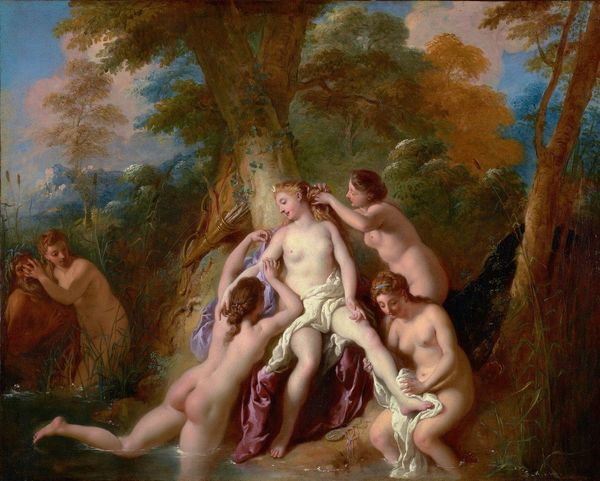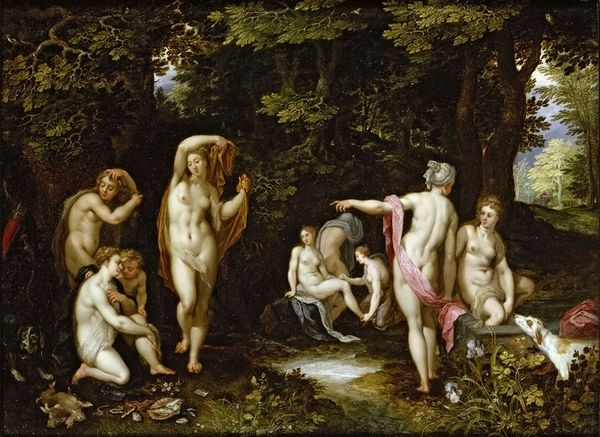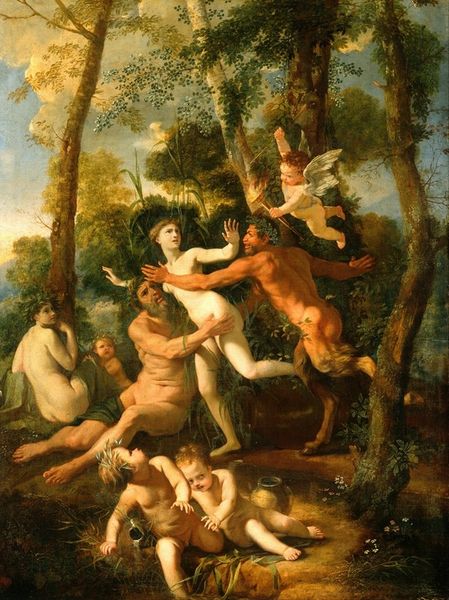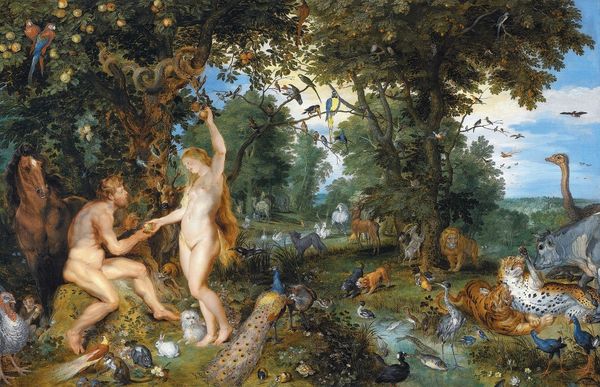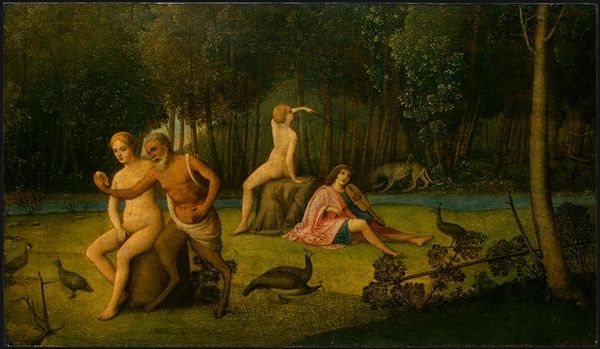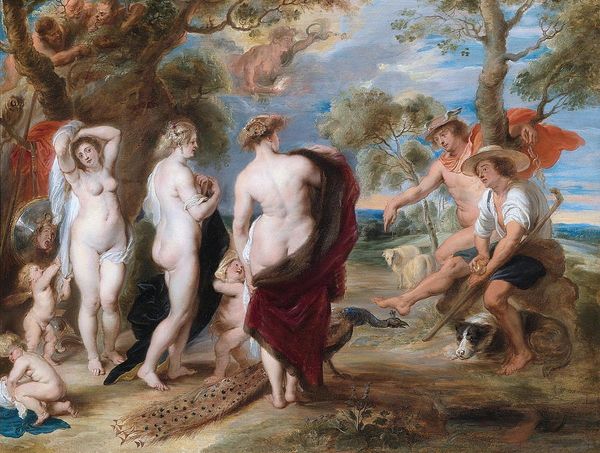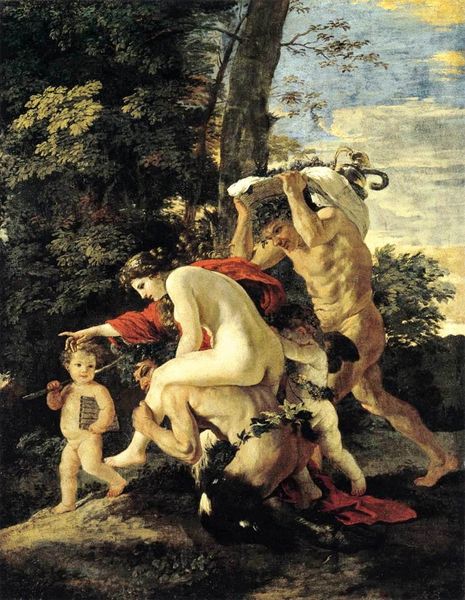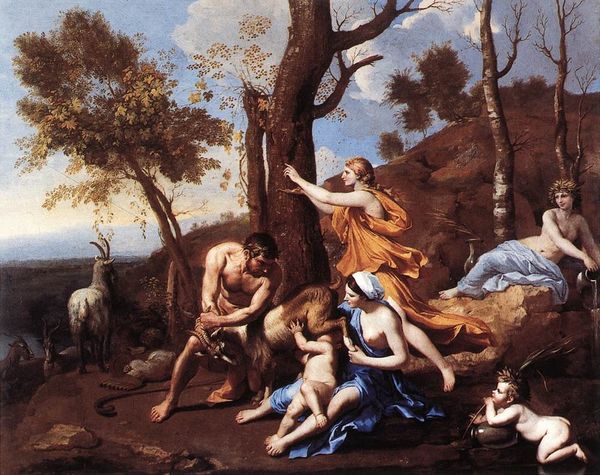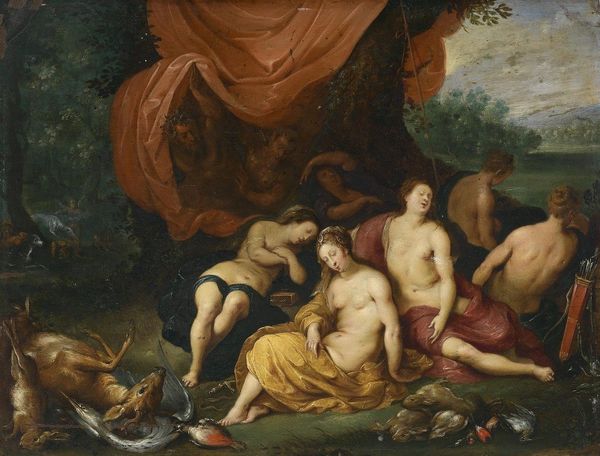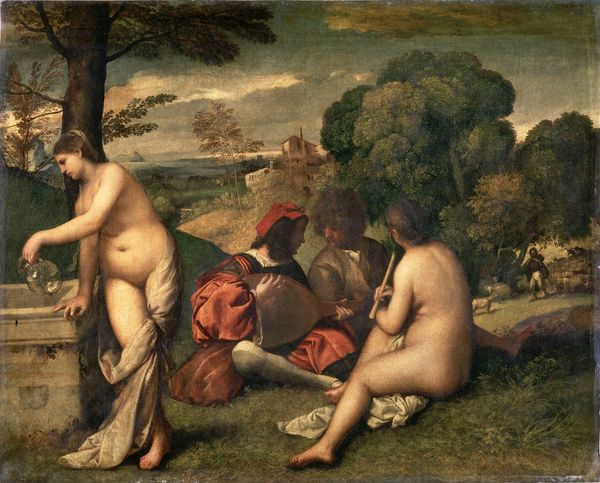
painting, oil-paint
#
allegory
#
painting
#
oil-paint
#
landscape
#
mannerism
#
roman-mythology
#
mythology
#
human
#
history-painting
#
italian-renaissance
#
nude
Dimensions: 152 x 191 cm
Copyright: Public domain
Curator: Oh, isn't this just deliciously unsettling? Correggio's "Leda and the Swan" from 1532, now residing in the Gemäldegalerie in Berlin, truly invites you into its ambiguous little world. I find the swan's caress more menacing than tender. What's your first impression? Editor: Well, "deliciously unsettling" pretty much nails it. Beyond the obvious dynamics on display, I am first struck by the luxuriousness of the scene's construction. Consider the layers of oil, likely refined by then-sophisticated pressing methods, combined with the possible use of a walnut wood support allowing for these smoothly modeled figures... Curator: See? The material world creeping into our mythology! I love it. The layers, not just of the paint but of the story, they deepen the resonance. It's a painting, yes, but also a meticulously constructed fabrication, a divine encounter reshaped by human hands... and appetites. It whispers of textures and desires. What do you see of the hand of labour here? Editor: Absolutely! And think about where Correggio was situated; amidst the political wrangling between the Papal States and other burgeoning powers! The ultramarine blues alone signal a financial investment—perhaps funded via mercantile activity in Venice. The labour is, yes, within Correggio’s craft and the training that afforded him that craft, but also the vast networks that supported him with precious pigments. Did such luxurious creation require cruel realities? Curator: Ooh, you've pierced a bubble. It pops my head right out of Olympus! Cruel realities indeed. Looking again, Leda's almost defiant gaze seems to know those shadows, not just in the literal wooded backdrop. Even the languid pose, perhaps it isn't submission but rather a grim awareness? What looks soft feels… complicit, knowing it needs resources that were procured violently elsewhere? I get that, I think. Editor: Indeed. Even the 'effortless' brushwork bespeaks hours, years, perhaps generations of learned skill honed, possibly, under the burden of a brutal economic engine elsewhere. Leda, though depicted passively, is a fulcrum for these material histories! Curator: Which adds another layer, doesn't it? The mythology and the history collapse together here, into a knowing reflection of human nature itself. Is anything truly "natural", let alone divine, once humans handle it? This one has legs, metaphorically, and implications that reach far beyond that swan’s wing! Editor: Quite right! "Leda and the Swan," considered in its own moment and in ours, prompts crucial questions about material desire. The artist's rendering—so sensual and knowing— invites continuous looking, and reckoning.
Comments
No comments
Be the first to comment and join the conversation on the ultimate creative platform.
